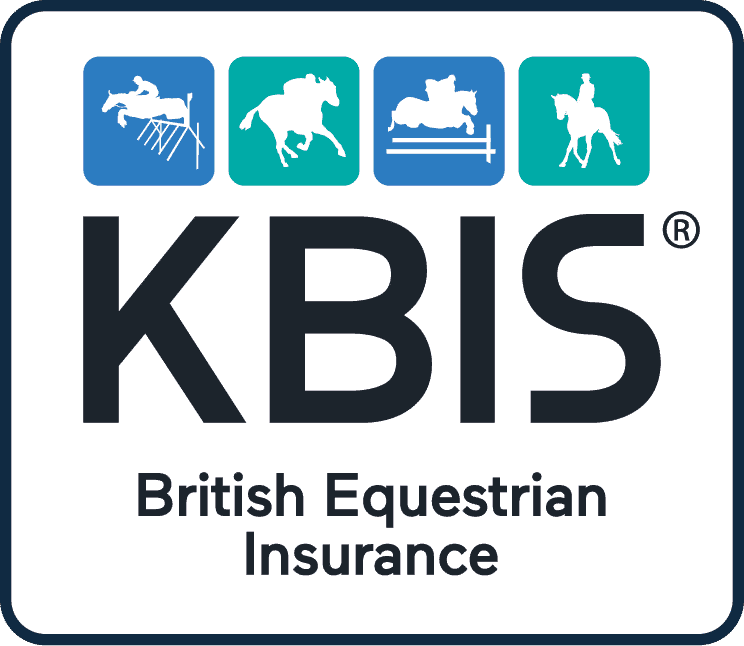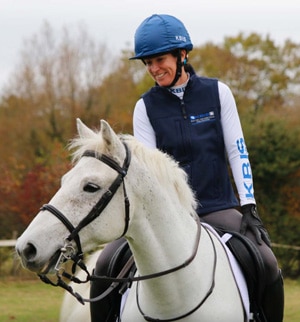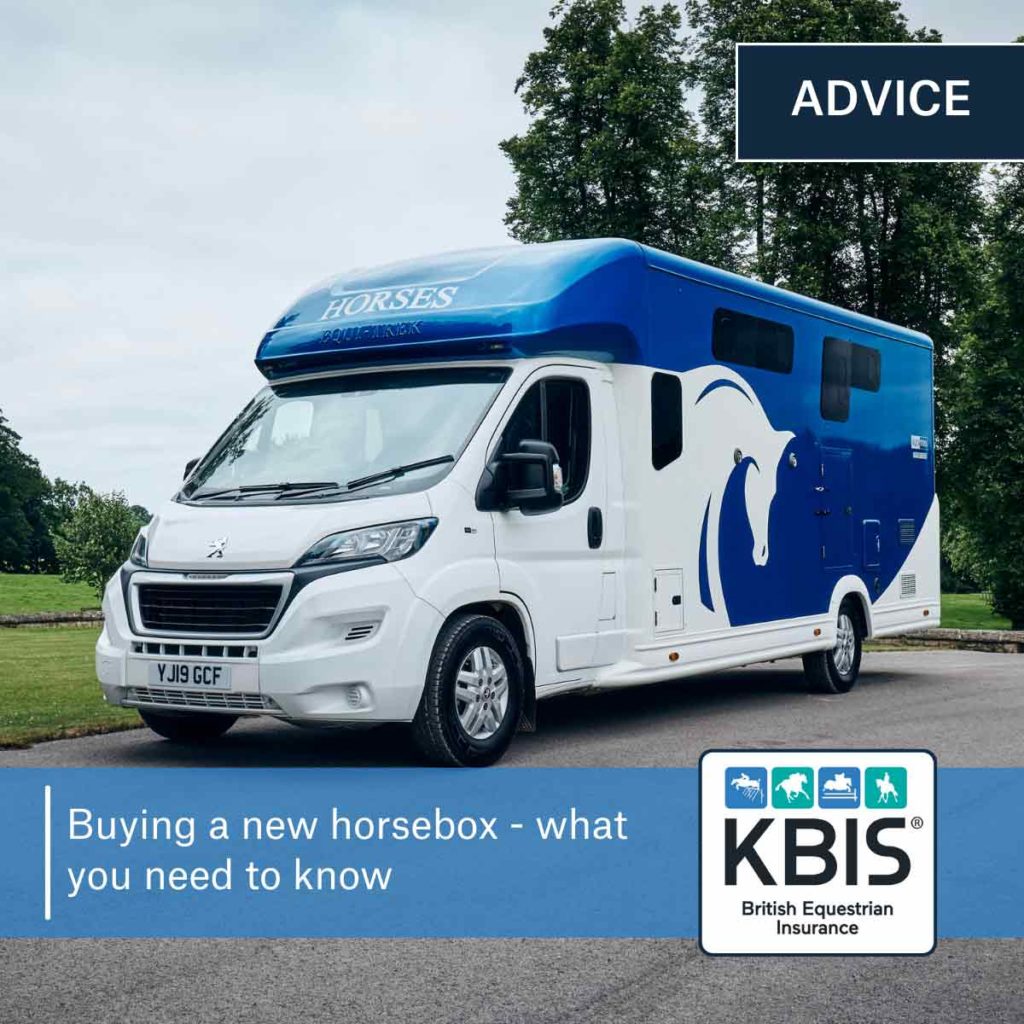Whether you are investing in a horsebox for the first time or replacing your existing vehicle, it is a huge investment and one that must include lots of research and consideration. We have teamed up with the horsebox building experts at Equitrek to bring you their expert advice on what to weigh up when it comes to buying a horsebox.
The most important ‘P’
One of the most important considerations is payload. Make sure you find a vehicle with a payload to suit your needs. You need to calculate how much your horses and their tack and equipment weigh, and don’t forget to take other things like passengers, water and fuel into consideration too.
If you exceed the payload, you are breaking the law and potentially putting yourself, your horses and other road users at risk. An overloaded vehicle could compromise steering, braking, tyres, axles and even increase fuel costs and engine strain. Always remember that payload is not just a practical limit, it’s a legal limit too.
Don’t fall for a ‘new’ horsebox on an old chassis
If you are buying second hand horsebox, make sure the vehicle has always been a horsebox and that the chassis is low mileage. Don’t get tricked into buying a new body on an old chassis as this will be an expensive mistake when the bills start coming in.
All Equi-Trek horseboxes are built on brand new chassis and the 3.5 tonne models can be driven on a standard car licence and have excellent safety features and payloads. The 3.5T Equinox even has living accommodation making it one of the most popular models in the range. If you don’t need living, the Sonic would be an excellent choice as it has a separate tack and changing area.
Moving to a bigger horsebox
Moving up from a smaller horsebox to a 7.5 ton GVW one really highlights the importance of a new or low mileage chassis. If something goes wrong, you can be looking at thousands of pounds to get back on the road with a larger horsebox.
If you are buying second hand, make sure it is weighed and check previous MOT’s and service history. Always make sure it comes with a plating certificate as you will need this for your annual test.
Payload is also a very important consideration as just because you are going bigger it does not necessarily mean you will be able to carry an extra horse or lots of extra equipment – make sure you find a vehicle with a payload to suit your needs. The vast majority of 7.5 ton horseboxes do not have the payload for two, let alone three horses. The absolute minimum payload of 2000kg (but ideally closer to 2500kg) will be required for two horses. The Equi-Trek Evolution starts with a payload of over 2500kg. Also, if you are going to be spending a lot of time away from home make sure the living accommodation is up to standard and will provide a comfortable and convenient home from home.
A tilt cab is also a must so that maintenance and repairs can be carried out easily by mechanical engineers – otherwise you would need to find someone with the facilities to lift the lorry on ramps over a pit which will be very costly and more difficult to arrange. Also make sure the flooring is aluminium planking not wood and that the ramp is not too steep.
You will also need a tachograph fitted even though you do not need to use it (it will limit your speed to 56mph) and make sure the vehicle comes with a plating certificate as you will need this for your annual test. The Equi-Trek Evolution is exclusively available with the Leisure Vehicle Pack which benefits the private owner as there is no speed limiter, no tachograph, no MOT for the first three years and you can use the third lane of the motorway when horses are not in transit.
To summarise, the three most important things when buying a new horsebox (7.5 ton or over) are payload, tilt cab and a new chassis.
How do you know it’s time to get a new lorry?
Once a vehicle reaches 100,000 miles it could be time to consider looking at a new lorry. By then servicing and maintenance bills may have increased and it can be more cost-effective to purchase a new lorry. The maintenance cost for a vehicle can easily become significantly more than the cost of a new one.
What should you consider for the insurance of a new lorry?
KBIS Motor Team Manager Lisa Arnold shares her top tips for taking out Horsebox insurance when you have found the right lorry for you.
Give yourself time
Once you have decided on a horsebox, you will need to make sure you have insurance cover in place before collecting and driving the horsebox. Give yourself enough time to arrange insurance, it is never a good idea to leave it until 10 minutes before picking it up!
Consider what you will be using the new horsebox for
Make sure that the quote you have been provided with covers what you need it to. If you are only using the horsebox for your own horses, then the cover you should be looking for is social domestic and pleasure use. If you are going to be using the horsebox in connection with your equestrian occupation, then you should be looking to have business use on the insurance which will cover you for your work. The widest cover given is for hire and reward, this generally covers horse transporters. This is not to be confused with self-drive hire as a lot of insurers do not provide this type of insurance.
Advice for young drivers
If you are a young driver, you may find quotes are higher due to your age and lack of driving experience, so it is best to inform your insurer/broker of any prior car driving experience or horsebox hire experience to take into account for your quote.
Know the true value of your horsebox
In today’s market, the value of horseboxes has fluctuated since Covid, so if you have an accident and your horsebox is written off you need to know that the value you insured your horsebox for will cover you to go out and buy a replacement.
Don’t forget Breakdown cover
When obtaining quotes for Horsebox insurance do not forget to also arrange quotes for Breakdown cover. This is absolutely essential when travelling horses. The cost of recovery of your horsebox and horses far outweighs the cost of a Breakdown policy premium. A KBIS Horsebox Breakdown policy starts at just £156.53 and includes recovery for you, your horses and your vehicle. Take a policy today and travel your horse with confidence, take a look at our cover.
Pay attention to the T’s and C’s
Always read the information on your insurance quotations and compare to other quotes you have received, do not just look at the premium. You may find that one insurer has a lower premium but a higher excess to pay in the event of a claim, or they apply administration fees or cancellation fees and so on. You must make sure that when taking out an insurance policy it is the right policy for you.
That’s Equitrek’s advice for what to consider when buying a new horsebox along with our own tips on how to go about taking out insurance cover when you have found the right one. Looking for more advice? Read our travel tips blog next.


